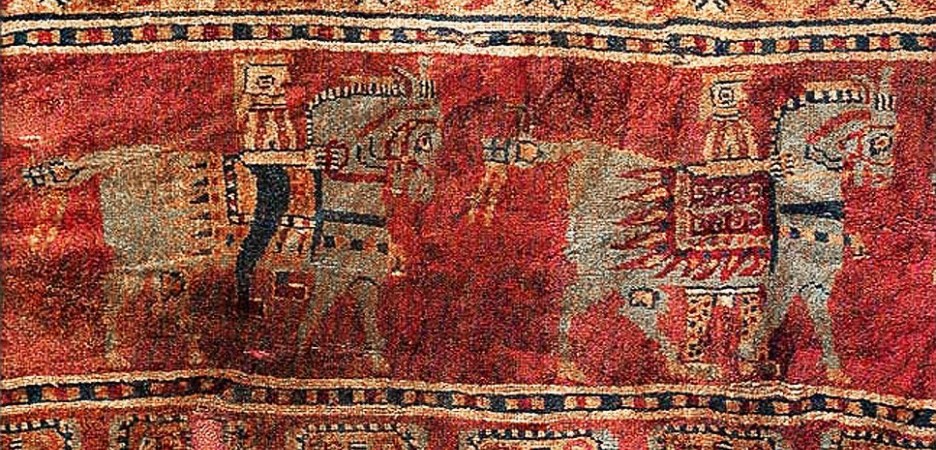The world’s oldest rug was made in Armenia
The area covering the Ukok plateau in Siberia is huge. The Altai Mountains and the Ob River are home to the territory of Altai Krai, which is harsh in winter.
The plateau descends into the Pazyryk Valley, which contains ancient kurgans (burial mounds) in the style of the Scythian peoples who inhabited the area in over two thousand years ago.
The area was started digging in the 1920s by archeologists and uncovered a wealth of historically important objects that offered an intriguing insight into the little known ancient Pazyryc nomadic tribes.

Mummies, clothes saddles, a big chariot, decorative or devotional figurines as well and cannabis seed with an inhalation tent.
When the tombs were unearthed, it was found that they had been remarkably preserved in ice since the 5th century BCE.
The mummies that were found were so complete that they still had their tattooed flesh and hair.

One of the most remarkable finds was the Pazyryk Carpet. To our knowledge, it is the oldest piled rug still in existence and is housed at St. Petersburg’s Hermitage Museum.
The museum’s website description of this ancient rug is as follows: “Its decoration is rich and varied: the central field is occupied by 24 cross-shaped figures, each of which consists of four stylized lotus buds.
This composition is framed by a border of griffins, followed by a border of twenty-four fallow deer.
The widest border contains representations of workhorses and men.” What the website does not mention is the ambiguity of the carpet’s origin.
The Pazyryk Valley was located between active trade routes spanning the ancient world, with China to the east and Central Asia to the southwest.
One of the mummies discovered–called the Siberian Ice Maiden–was clothed in a wild silk tunic that likely originated in India. Some of the figurines were gilded, and gold is not native to the area.
The Pazyryk Carpet most likely came from Central Asia, though it is really a tossup between Persia or Armenia. Perhaps after using a service for Persian rug cleaning Sydney based or similar, they would better be able to work out which nation the rug is originally from! Both nations have traditions of carpet weaving spanning thousands of years, and the horses represented on the ancient carpet are nearly identical to horsemen on a frieze in the ancient Persian city of Persepolis.
The possibility that the rug was produced by the Pazyryks is extremely slim because the sophistication and elegance of the design are indicative of a settled and cosmopolitan civilization, unlike the nomadic Pazyryks.

Based on a study of ancient artistic development, textile expert Ulrich Schurmann has reached the conclusion that the rug is of Armenian origin.
The Persians also claim it as their own, believing that it’s an artifact from the Achaemenid Empire.

For now, the exact origin of the Pazyryk Carpet will remain a mystery, but its significance and beauty is forever eternal.
This rug blog about the oldest rug in the world – the Pazyryk Carpet, was published by Nazmiyal Antique Rugs in NYC.
